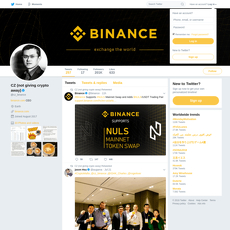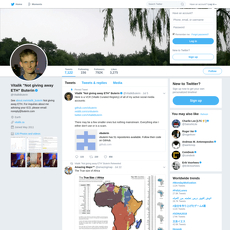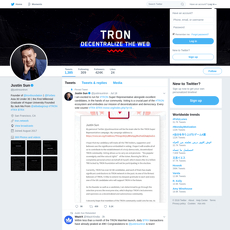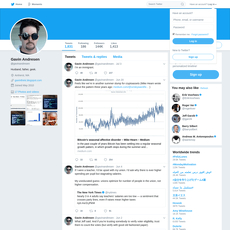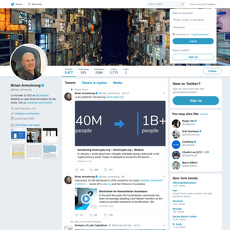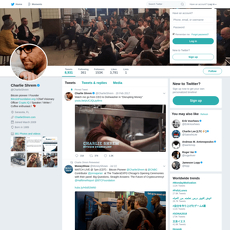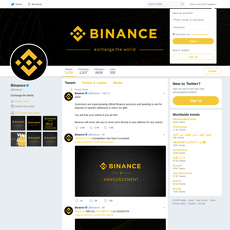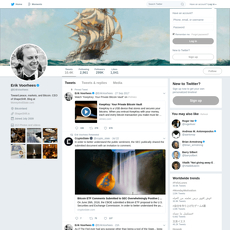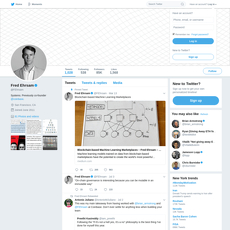nic carter Review
nic carter
x.com
Nic Carter Review Guide: Everything You Need to Know + FAQ
Wondering if following Nic Carter on X (Twitter) is actually worth your time—or just another ping on a noisy timeline?
I keep things practical: what you’ll learn, why it matters, and how to squeeze real value out of following a high-signal account. In this guide, I’ll show you who Nic Carter is, what he posts about, how to filter signal from noise, and how to turn his ideas into an edge around Bitcoin, mining, stablecoins, and crypto policy. I’ll also clear up the Nic vs. Nick Carter confusion that keeps search results messy.
If you’ve ever felt your feed is 90% takes and 10% facts, you’re not alone. One well-cited study from MIT (Science, 2018) found false news spreads faster than true stories on social platforms—so developing a simple system to spot quality sources isn’t optional; it’s survival. That’s the lens I’m using here.
The problems most people face
Crypto X can be a maze. Hot takes fly, context is missing, and the inside jokes make it worse. Add in search confusion—“Nic Carter” (crypto) vs. “Nick Carter” (the singer)—and people end up following the wrong person or getting distracted by unrelated topics.
- Signal vs. noise: Big news triggers a storm of opinions. Finding the original data or a credible breakdown takes effort.
- Context gaps: Threads reference energy markets, banking rails, or policy history without background. If you don’t know the backstory, you miss the point.
- Speed over accuracy: Social rewards quick reactions, not careful sourcing—exactly why strong filters matter.
- Name confusion: Searching “Nic Carter Twitter” can surface “Nick Carter” topics like music or celebrity news. Totally different person.
- Time sink: Even good accounts can overwhelm if you don’t organize them into lists or use bookmarks wisely.
Quick tip: When a post makes a strong claim, check for links to data or primary sources. No link? Don’t react—research.
What you’ll get from this guide
- What Nic Carter is credible for—and what he isn’t.
- How to follow him effectively without getting drowned in replies and memes.
- The topics he covers best: Bitcoin and energy, mining, stablecoins, banking rails, and policy.
- Where the debates are, so you can read smart and avoid echo chambers.
- How to avoid the “Nic vs. Nick Carter” search trap.
I’ll keep it simple, specific, and focused on getting you an actual edge from his feed—not just entertainment.
Who this is for
- People building a high-signal crypto/X list.
- Fund managers and allocators who track policy and market plumbing.
- Founders and operators who can’t afford bad info.
- Miners and energy folks who want credible takes on grids and load balancing.
- Bitcoiners who prefer arguments backed by sources, not vibes.
Quick disclaimer
This is not investment advice. I’m focused on information quality and context so you can make your own calls. Always cross-check claims with primary data and multiple sources.
Ready for the essentials—who Nic Carter is and why people actually follow him? That’s next. Want the short version or the full story?
Who is Nic Carter and why people follow him
If you’re tired of hot takes and want signal with receipts, Nic Carter is worth your attention. He’s a partner at Castle Island Ventures and the cofounder of Coin Metrics, which gives him two strong vantage points: venture investing in real crypto businesses and access to clean, on-chain data widely used by funds, media, and analysts.
He focuses on the parts of crypto most people misunderstand: Bitcoin mining and energy, stablecoins and banking rails, proof-of-reserves, and the policy layer that actually moves markets. The tone is rational, the arguments are sourced, and the humor is dry. If you appreciate sources over slogans, you’ll feel at home.
“Proof-of-reserves isn’t a silver bullet, but it’s a start.” — CoinDesk essay
I like that line because it captures his whole approach: pragmatic, not tribal. Not everything is fixed with one tool, but we can raise standards step by step.
Background and credibility
- Castle Island Ventures (partner): Early-stage investor across crypto infrastructure, market structure, and fintech that connects bank/payment rails to crypto. This lens shows up in his posts on stablecoins, banking access, and compliance trade-offs.
- Coin Metrics (cofounder): Launched in 2017 and now one of the most cited data sources in the industry. If you’ve read a weekly State of the Network or seen “on-chain flows” in mainstream articles, you’ve seen its fingerprints.
- Research and commentary: Long-form essays on his site, regular podcasting, and panels. He’s frequently quoted on Bitcoin mining, energy markets, and policy because he brings outside data to crypto debates instead of just vibes.
- Proof-of-reserves advocate: Before and especially after 2022’s exchange failures, he pushed exchanges toward attestations, wrote the case for PoR, and tracked who was actually doing the work. Not perfect, but it nudged the industry to publish more than tweets.
- Energy and mining literacy: Expect references to neutral data like the Cambridge Bitcoin Electricity Consumption Index (CCAF) and grid-operator materials (e.g., ERCOT) when discussing curtailment, load balancing, and energy mix. You’ll see him compare claims to what grid data actually shows, especially around miners acting as flexible load in peak events.
The throughline: he argues from first principles, then backs it with primary sources. That’s rare on X and why a lot of allocators, miners, and policy folks keep him on notifications.
Where to find him
- X (primary): @nic__carter for threads, charts, and policy reactions.
- Essays: Curated on niccarter.info for deep context you can’t get in a single post.
- Podcast: On The Brink for longer conversations with operators, researchers, and policymakers.
What he’s not
- Not a signals guy. You won’t get “buy/short here” or altcoin roulette.
- Not a meme account. Expect arguments, not dunk comps.
- Not chasing engagement. He links to filings, grid reports, and data instead of cherry-picked screenshots.
If you want fewer guesses and more groundwork, his feed scratches that itch. Curious what his posts actually look like day to day—and how to read them in minutes instead of hours? That’s up next.
What to expect from @nic__carter on X
If you’re tired of crypto takes with no receipts, this is where your timeline gets sharper. Expect source-backed threads, energy and mining breakdowns that actually reference grid mechanics, and policy context that goes beyond headlines. The tone? Smart, a bit spicy, and very link-heavy—exactly what you want when the market gets loud.
“Less heat, more light.”
Typical content types
- Research threads and chart commentary — He often pulls on-chain or market data to make a point, not just a meme. Example: stablecoin settlement or supply stats with Coin Metrics charts and definitions. If he’s debating stablecoins as payment rails, expect links you can verify, like Coin Metrics charts or market structure notes.
- Policy takes (with receipts) — When banking regulators publish statements, he’ll post the PDF and highlight the parts that matter. If you saw “Operation Choke Point 2.0” anywhere, he helped frame it with a widely shared essay: Operation Choke Point 2.0 is Underway. He also points to primary sources like the Federal Reserve’s SR 23-1 crypto risk guidance for banks.
- Bitcoin mining and energy — He spends real time on grids, curtailment, and flexible load. You’ll see references to ERCOT’s Controllable Load Resources and studies on demand response (not just slogans). Good places he’ll nudge you toward:
- ERCOT CLR program (how miners get paid to curtail)
- EPRI: Could Bitcoin mining benefit the power system?
- Cambridge Bitcoin Electricity Consumption Index (CBECI)
- Riot’s reported $31.7M in August 2023 power credits and demand response revenue (a concrete example of flexible load in action)
That’s the vibe: actual grid mechanics, not vibes. When he argues miners can improve grid reliability at the margin, he points to programs and data like the above. - Proof-of-reserves and transparency — After FTX, he pushed for exchanges to publish proofs and explain limitations. Expect links like CoinDesk’s op-ed The Case for Proof of Reserves, plus examples of how attestations work and where they fall short (liabilities, timing, and custody disclosures).
- Industry news through a VC lens — Bank/payment rails, liquidity plumbing, stablecoin issuance, and where risks migrate when policy shifts. He’ll connect news events to second-order effects: how a bank’s risk memo impacts stablecoin settlement or which rails become bottlenecks.
- Myth-busting posts — Expect rebuttals to common claims like “Bitcoin can’t participate in demand response” or “stablecoins don’t settle anything real.” He tends to bring data, program documents, and track records; he’s not shy about calling out cherry-picked numbers.
Posting rhythm and style
Think bursts around news cycles, not a drip feed. He’ll post a long thread, reply to critics, add links, and disappear until the next catalyst or research drop. The tone leans witty and sometimes cutting—good for engagement, but don’t stop at the punchline. The linked sources are where the real value lives.
When energy stories heat up (ERCOT alerts, heat waves, or new miner filings), watch for charts, program docs, and counterpoints. When policy moves (joint statements, enforcement actions, or banking drama), expect annotated PDFs and history lessons from prior financial regimes that rhyme with crypto’s moment.
How to read him right
- Follow the link, then the thread — Open the source first. He usually quotes the line you need, but the context is what turns a take into an insight.
- Check definitions and timeframes — With energy or stablecoin data, look at the methodology and period. Cambridge’s CBECI and Coin Metrics each define metrics differently; knowing that prevents confusion.
- Cross-verify mining claims — If he mentions curtailment or grid benefits, look at:
- ERCOT program pages and market notices
- Miner earnings reports and 10-Qs for power credits
- Independent coverage like EPRI or utility filings
- Bookmark high-signal threads — Save threads that cite primary docs (policy PDFs, energy studies, exchange attestations). Those are the ones you’ll reuse during volatility.
- Distill the takeaway — After reading, write a one-liner in your notes: “What changed?” “Who’s affected?” “What to monitor?” It turns a spicy tweet into a repeatable edge.
If this is the kind of signal you want on your timeline, the real trick is catching it without living on X all day. Want the setup I use to surface his best posts automatically and cut the noise by 80%? That’s exactly what I’m sharing next.
Turn his feed into an edge (practical setup)
Want real signal without babysitting the timeline? Build a simple system that pulls out his highest-value posts and pairs them with hard data. It takes 10 minutes to set up and saves you hours of scrolling.
“You don’t need more tweets. You need better filters.”
Smart follow checklist
- Create a focused List: Name it “Policy & Markets” or “Bitcoin Energy.” Add @nic__carter and pin the List to your X sidebar. Lists cut out the algorithm and keep you in research mode.
- Turn on thread notifications (the bell): If you track mining, stablecoins, or policy, enable alerts for new threads. Threads are where he drops sources, charts, and context.
- Save Advanced Search queries (bookmark each results page):
- from:nic__carter "proof-of-reserves" filter:links -filter:replies
- from:nic__carter ("ERCOT" OR "grid" OR "load") since:2023-01-01 filter:links
- from:nic__carter (stablecoin OR stablecoins OR "banking rails") filter:links
- from:nic__carter "Operation Choke Point 2.0" filter:links
These queries surface posts with links and cut out most replies, so you see the research without the noise. - Bookmark the keepers: Create a browser folder called “Nic — High Signal.” Any time he posts a thread with primary data or policy docs, save it. Bonus: use Thread Reader to unroll long threads for easier archiving.
- Automate alerts for keywords: With a tool like IFTTT or Zapier, route new posts from him that include “proof-of-reserves,” “stablecoin,” or “ERCOT” to your email or Slack. One recipe: “New tweet by specific user → filter by keyword → send to Slack.”
- Set a weekly review: Calendar a 20-minute session (Friday pm works) to skim your saved threads and add action items: things to model, data to download, or questions to ask founders/LPs.
Real-life use case: When he’s posting on Texas grid dynamics and miners acting as flexible load, jump straight to the linked grid data and curtailment references. That’s where the tradable insight lives, not in the punchline.
Cross-referencing for accuracy
Great analysis still needs verification. Pair his posts with primary datasets so you don’t over-index on a single opinion.
- Bitcoin energy and mining:
- ERCOT dashboards and reports (Texas grid): ercot.com/gridmktinfo
- U.S. Energy Information Administration (hourly grid + fuel mix): eia.gov/electricity/gridmonitor
- Cambridge Bitcoin Electricity Consumption Index (methodology + regional estimates): ccaf.io/cbnsi/cbeci
- Public miner disclosures: Riot, Marathon (monthly production, curtailment revenue notes, energy costs)
- Stablecoins and banking rails:
- Coin Metrics free charts (supply, flows, exchange balances): charts.coinmetrics.io
- DefiLlama stablecoin dashboard (market share and supply changes): defillama.com/stablecoins
- Issuer transparency pages: Tether, Circle
- Regulatory signals: OCC/FDIC/Fed joint statements (e.g., Jan 3, 2023 on crypto-asset risks): federalreserve.gov
- Proof-of-reserves:
- Exchange PoR pages and auditor reports; note audit firm status and scope (attestation vs. full audit)
- Compare exchange balances with on-chain views via Coin Metrics or Glassnode to spot gaps
How to apply this quickly:
- If he argues miners stabilize the grid via curtailment: check ERCOT’s Ancillary Services prices and event logs around cited dates. Look for flexible load participation and credits issued. Cross-check with miner monthly updates for curtailment revenue.
- If he ties stablecoin growth to risk appetite: pull USDT/USDC supply from Coin Metrics, overlay with BTC returns. You’ll see when supply expansions line up with risk-on regimes—and when they don’t.
- If he highlights banking pressure (“Operation Choke Point 2.0”): read his referenced essay on the pattern of de-banking, then compare it with the timing of supervisory statements and bank risk bulletins. Start with his widely cited piece: Choke Point 2.0 Is Underway.
Managing noise
Control the feed, don’t let it control you. A few small tweaks make a big difference.
- Mute off-topic words: “Nick Carter”, “Backstreet”, “airdrop”, “gm”, “giveaway”. This keeps entertainment from mixing with research.
- Use Lists + Latest: Read him from your List in “Latest” view. Avoid the “For You” tab when you’re in analysis mode.
- Search filters on the fly: Add -filter:replies and filter:links to ad-hoc searches to surface source-heavy posts.
- Batch your intake: Check the List once a day or even once a week. Save the best; skip the rest. Consistency beats compulsive refreshing.
- Lean on Community Notes: If a claim gets a Note, read it. It’s a fast way to find primary links you might have missed.
Set this up once, and his feed turns into a research stream you can act on. But which of his big theses actually paid off—and where did the debates get spicy? That’s next. Ready to see the wins, the pushback, and what it means for you?
Big ideas, wins, and pushback
Here’s the fast map of the ideas that make following @nic__carter useful—and where the debates actually live. Keep an eye on the receipts; that’s where the edge is.
“What gets measured gets managed.” — Peter Drucker
Notable themes people follow him for
Bitcoin mining and energy — grid dynamics, renewables, and marginal demand.- Flexible load as a feature: In Texas, miners register as Controllable Load Resources (CLRs), meaning they can throttle down within seconds when the grid is tight. During the August 2023 heat wave, Riot Platforms reported pausing operations and earning $31.7M in power credits—that’s the grid paying flexible users to stand down so households and hospitals keep the lights on.
- How big is mining’s footprint? The U.S. Energy Information Administration estimates crypto mining accounts for roughly 0.6%–2.3% of U.S. electricity use. Nic’s angle: the “when” and “where” matter more than the raw total—interruptible demand can stabilize renewables-heavy grids that swing with wind and sun.
- Renewables and methane: You’ll see him highlight experiments where miners co-locate with curtailed wind/solar or mitigate methane by using otherwise-flared gas. Advocates like Daniel Batten track this trend (example resource: methane abatement data), while he urges looking at additionality and real-world constraints, not marketing.
Stablecoins and banking rails — how fiat meets crypto in the real world.- Why it matters: Stablecoins settle in the trillions annually on public ledgers (see ongoing Coin Metrics research). Nic focuses on reserve quality, bank counterparties, and the boring plumbing that breaks at the worst time.
- Case in point: When USDC briefly depegged amid the SVB shock in March 2023, the link between stablecoin reserves and bank safety became brutally obvious. Circle’s post-mortem explains the unwind and re-peg process (Circle blog), the kind of episode Nic uses to argue for robust, transparent cash and T-bill reserves across multiple venues.
- Macro read: Expect him to press the case for narrow, safe stablecoin structures and clearer access to payment rails—less glossy narratives, more plumbing you can actually audit.
Proof-of-Reserves (PoR) — accountability for exchanges and custodians.- The standard he pushes: On-chain proofs of assets + credible, challengeable proofs of liabilities. Without both, it’s pageantry.
- Real-world references: He frequently points to exchanges that publish recurring PoR with user verification (e.g., Kraken) and critiques partial efforts that omit liabilities or use one-off accounting letters. For context on the ideal model, Vitalik’s solvency post lays out the cryptography and trade-offs.
- Takeaway: If you can’t verify it yourself—or at least observe a process you’d trust with material money—treat claims with suspicion. That’s his drumbeat.
“Operation Choke Point 2.0” — the crypto–banking friction story.- The thesis: A coordinated chill on crypto access to banking via supervisory nudges rather than explicit rules. Nic’s widely read essay kicked off this framing.
- The receipts he flags: The Jan 3, 2023 Interagency Statement on crypto-asset risks to banks; supervision letters; and the practical outcomes for crypto-friendly banks around that time. He connects the dots and asks you to judge the pattern.
- Why it matters: If payment rails freeze, even solvent crypto businesses seize up. Founders and allocators watch this like hawks.
Where critics push back
- “Net grid benefit” claims: Critics argue miners can raise local prices, crowd out other industrial loads, or keep marginal fossil generation online. References you’ll see:
- White House OSTP (2022) warned about emissions and urged standards and demand-response guardrails.
- EIA (2024) notes significant uncertainty around total load and local impacts; not all regions are Texas, and not all miners are truly flexible.
- New York’s PoW moratorium on new fossil-fueled mining permits shows the policy backlash when communities feel the costs.
The debate isn’t “uses energy = bad” vs “energy good.” It’s whether interruptibility, siting, and contracts create measurable public benefit versus externalities. Good-faith folks exist on both sides—read them. - Policy tactics and the “Choke Point 2.0” frame: Some bank lawyers and ex-regulators argue there’s no conspiracy; just risk management after stablecoin and exchange blowups. They say matching-risk customers got matched treatment. Nic counters that the pattern looks coordinated even without a memo titled “Do Not Bank Crypto.” Your call: examine the primary docs and timelines.
- Banking/crypto interactions: Post-SVB, skeptics say contagion and duration risk—not crypto—drove decisions at some banks. Others note crypto-linked deposit volatility and supervisory pressure clearly mattered. Nuance lives in the footnotes of supervisory letters and earnings calls; he’ll often point you there.
Your move: read both sides, save the links, and compare claims to data. If someone says “miners stabilize grids,” look for market design specifics (CLRs, curtailment records, power purchase agreements). If someone says “stablecoins are unsafe,” ask about reserve composition, custodians, and redemption mechanics. If someone says “no banking crackdown,” pull the interagency statements and line them up against account closures.
What this means for you
- Miners: Model power-price optionality as a revenue line, not a tweet. Track your ISO/RTO’s demand-response rules and historical curtailment payouts. Watch ERCOT filings like a hawk, even if you’re not in Texas—other grids copy success.
- Founders: Assume a “trust, then verify” world. Design for PoR from day one if you custody assets. Build bank redundancy and document your compliance program like you expect a surprise exam.
- Allocators: Treat his feed as an early-warning system for policy and plumbing—use it to update scenario trees, not to make snap trades. Cross-check with original sources before you size any bet.
Strong opinions are fine—strong evidence is better. Want a balanced shortlist of energy researchers, policy lawyers, and market analysts who can confirm or challenge these themes, plus the most useful primary links to keep handy? That’s exactly what’s next.
Other voices and helpful links
If you’re building a high-signal feed around Bitcoin energy, stablecoins, and policy, don’t stop at one account. Here’s the set I keep close so I can pressure-test takes, spot blind spots, and get primary data fast.
Who to add alongside Nic
Energy and grid (pro and skeptic, with data):
- Cambridge Centre for Alternative Finance (CBECI) — independent estimates for Bitcoin consumption and emissions. Their 2022 analysis is a useful baseline for “sustainable share” debates.
- ERCOT dashboards — real-time and historical Texas grid data; the best place to verify demand-response claims by miners in TX.
- Jesse Jenkins and Princeton ZERO Lab — grid modeling and flexible load research that helps you test “miners stabilize grids” narratives.
- Daniel Batten — frequent Bitcoin energy analyses. Read with a critical lens and compare to Cambridge and ERCOT.
- Andrew Dessler — climate scientist offering pushback on crypto energy claims; good counterbalance to industry voices.
- BloombergNEF — broader energy transition research to frame miner load vs. renewable buildout incentives.
- Hashrate Index (Luxor) — mining economics, breakevens, and fleet efficiency data that contextualize energy debates.
Policy and law (US and international):
- Jake Chervinsky — policy analysis from the crypto advocacy side.
- Gabriel Shapiro — hard-nosed legal takes on custody, disclosures, and exchange practices.
- Collins Belton — practical counsel on US regulatory risk for founders and products.
- Rohan Grey — critical look at stablecoins and private money; useful to stress-test assumptions.
- Coin Center (and Peter Van Valkenburgh’s work) — research-forward advocacy and policy comment letters.
- BIS stablecoin resources — global central bank perspective on risks, tokenized deposits, and design tradeoffs.
Stablecoins and payment rails:
- Jeremy Allaire and Dante Disparte (Circle) — policy and transparency updates for USDC.
- Paolo Ardoino (Tether) — reserve breakdowns and issuer responses. Pair with attestations below.
- Patrick McKenzie — clear thinking on card networks, settlement, and bank/payment plumbing.
- Circle transparency and Tether transparency — monthly reserve attestations, composition, and custodians.
Transparency and proof-of-reserves:
- Kraken’s Proof-of-Reserves — user-verifiable Merkle-tree approach; a reference model to judge others by.
- Chainlink Proof of Reserve — on-chain monitoring of selected assets/reserves; helpful for automated alerts.
- Coin Metrics research — data-heavy work on market structure, supply, and custody flows.
Operators and real-world examples:
- Riot Platforms — production updates and curtailment credits (e.g., public reports around TX grid stress events are useful case studies).
- Marathon Digital — fleet and energy updates that show how business incentives shift with power prices.
Useful resources for deeper research
- Nic Carter’s essays — source his arguments at the original, long-form level.
- On The Brink (Castle Island) — interviews with policymakers, miners, and founders for primary-sourced context.
- Cambridge “Deep Dive into Bitcoin’s Environmental Footprint” — methodology and assumptions you can compare to industry surveys.
- ERCOT load and pricing dashboards — verify curtailment, negative pricing periods, and miner behavior during grid stress.
- Hashrate Index — network hashrate, ASIC efficiency, and power price proxies to ground any energy or profitability claim.
How I vet sources on Cryptolinks
Trust, but verify. Then verify again with a source that doesn’t share the same incentive.
- Start with primary data: If someone claims “miners improved grid stability,” I pull ERCOT load/price data during the cited window and look for curtailment patterns, not just anecdotes.
- Check methodology, not just the headline: When a thread reports “X% renewable share,” I compare survey-based estimates (e.g., industry councils) against independent models like Cambridge CBECI and note what’s included or excluded (co-location, REC purchases, off-grid gas, regional mixes).
- Look for disclosure and conflicts: Issuer statements (e.g., Circle or Tether) matter, but I weigh them alongside auditor attestations, custodian details, and changes over time.
- Replicate where possible: For proof-of-reserves, I prefer exchanges that let users verify Merkle inclusion (see Kraken) and that publish auditor procedures. If I can’t reproduce the check, it gets a lower trust score.
- Cross-opinions are a feature, not a bug: Pair an industry advocate (e.g., Batten) with a skeptic (e.g., Dessler) and an independent dataset (Cambridge/ERCOT). Consensus across incentives is rare—but when it happens, I pay attention.
Quick example: during Texas grid stress events, miners often report major curtailments and credits. I’ll read the miner’s release (e.g., Riot Platforms production updates), then check ERCOT real-time prices and load drops in the same window. If curtailment aligns with peak prices and system-wide demand-response, I give the claim more weight. If it doesn’t show up in the data, it goes in the “marketing” bucket until proven otherwise.
Want a fast, no-BS verdict on whether following Nic is worth it—and the quick answers to the “Nic vs. Nick” confusion I still see weekly? That’s next. Ready for the straight answers?
FAQ and final take
Are Nic Carter (crypto) and Nick Carter (the singer) the same person?
No. Nic Carter is a crypto investor and researcher best known for Bitcoin/energy analysis, banking rails, and policy commentary. Nick Carter is the Backstreet Boys singer. Search results often blend the two; this page is about Nic, the crypto VC.
What is Nic Carter known for in crypto?
He’s a partner at Castle Island Ventures and cofounder of Coin Metrics. People follow him for smart takes on Bitcoin mining and energy, proof-of-reserves, stablecoins, and U.S. crypto policy. Expect data, historical context, and a willingness to argue his case.
I see questions about “what condition does Nick Carter have” or “how long has Nick Carter been sober.” Is that related?
No. Those are about the singer. Different person, different world.
Should I make investment decisions based on his tweets?
Don’t do that. No single feed should drive your portfolio. Use his posts as inputs. Cross-check with primary sources, compare with other experts, and decide on your own timelines.
Is he a Bitcoin maximalist or more mixed?
He’s Bitcoin-forward but pragmatic. He’ll defend Bitcoin’s energy mechanics and market role, yet he also talks stablecoins, banking policy, and transparency standards that apply beyond BTC.
How can I sanity-check energy claims I see referenced in his threads?
- Compare against the Cambridge Bitcoin Electricity Consumption Index: ccaf.io/cbeci
- Look at what U.S. energy authorities publish: EIA’s crypto mining page and notices: eia.gov/special/crypto/
- When Texas is mentioned, review ERCOT docs and public dispatch/curtailment data: ercot.com
- Check miner disclosures for curtailment credits and demand response (e.g., public filings/press releases from listed miners)
That quick check keeps you anchored to measurable facts, not just a good thread.
Any examples where his focus turned into real-world action?
- Proof-of-Reserves push (post-FTX): After 2022’s blowups, he pressed for on-chain reserve attestations. You can now see PoR pages at major exchanges like Kraken, OKX, and Binance. They’re not perfect, but they’re a step toward verifiability.
- Energy and grids conversation: He’s highlighted how miners act as flexible load—curtailing during stress events. For context and data, I compare those claims with ERCOT reports and the EIA’s tracking of crypto electricity use. Studies and dashboards don’t always agree, but they give you a way to measure the argument.
“Follow the links, not the hot takes.” The best value comes when you click through the sources, note the methodology, and save the charts that matter to your thesis.
What’s the best way to use his feed without getting lost?
- When he posts a thread on energy or policy, open the links and save the PDFs. Keep a folder with your own notes.
- Cross-reference with neutral datasets (Cambridge, EIA) and operator reports (miners, grid operators).
- When something sounds absolute, look for the assumptions. Energy location, seasonality, and grid design matter a lot.
Final take
Follow @nic__carter if you care about Bitcoin’s energy reality, stablecoin plumbing, and policy risk. He’s sharp, data-minded, and he challenges lazy narratives. Set alerts for his threads, save the ones with hard references, and always verify with primary sources like Cambridge CBECI and the EIA. That’s how you turn a follow into real signal.
CryptoLinks.com does not endorse, promote, or associate with Twitter accounts that offer or imply unrealistic returns through potentially unethical practices. Our mission remains to guide the community toward safe, informed, and ethical participation in the cryptocurrency space. We urge our readers and the wider crypto community to remain vigilant, to conduct thorough research, and to always consider the broader implications of their investment choices.


